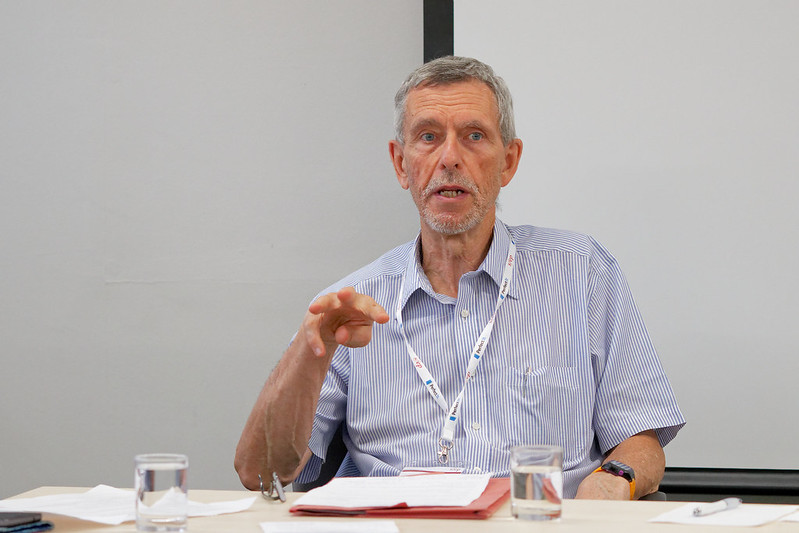
Paul Beverley at the 2019 SfEP conference, photo courtesy of CIEP.
On 9 July, Word macro man Paul Beverley initiated a handful of participants into the magic of macros, those nifty automated operations tools in Word that are created using the Visual Basic programming language. Paul has developed over 800 of these over the years, and has generously shared them with the editing community. Macros can automate a number of actions that editors need to perform on a regular basis, and they can save you hours of time and free up brainpower that can then be used to focus on the content of the text itself, instead of on technicalities and consistency issues.
Paul’s workshop, titled ‘Macros by the tourist route’, was aimed at absolute beginners and was intended to teach us how to essentially copy and paste Paul’s code into Word’s Visual Basic editor. The beauty of this is that no programming skills or very advanced technical skills are required; anyone can benefit from the power of macros if they learn how to copy and paste Paul’s code into Word.
We began by discussing our various operating systems, Word versions and experiences with macros. Once Paul had obtained an idea of our capabilities and experience and explained the basics of macros to us, he asked us to open a Word document he had sent us a download link to in advance.The documents contain step-by-step instructions with screenshots. I found them to be incredibly clear and helpful.
By following the steps in these documents, which are freely available to everyone in both a Windows and a Mac version, we learned how to record a basic macro and how to open Word’s Visual Basic editor. We then copied and pasted macro code into the editor, and tested our new macro. We also learned how to assign a keystroke to it, so we could execute the macro quickly.
Next, Paul explained where we could find the text of other macros (on his website) and let us carry out the rest of the steps in the instruction document. I learned how to install a macro that fetches Paul’s macros in one click by just typing their name into Word, which was pretty cool. We also learned how to install some of Paul’s popular macros, DocAlyse, ProperNounAlyse, and other information-based tools. These analyse a document without making any changes.
Paul then briefly introduced macros that belong to the ‘global change’ tools category, including his powerful FRedit macro. This is a global, advanced find-and-replace macro that is incredibly useful but also a bit trickier to learn how to use. However, the information-based macros are already incredibly useful, and I’ve really benefited from using a number of them already. A client of mine, for example, wanted to provide a glossary of Arabic terms at the end of her manuscript. We had italicized Arabic terms throughout the document, so I used a macro called ‘ItalicWordList’ to provide her with a list of all italic terms in the document. While I had also kept a style sheet of these terms, the macro took only a few seconds to provide a list of all italic terms against which the style sheet could be checked for completeness.
If anyone is interested in learning more about macros, Paul’s website and YouTube channel are good places to start.
For more CPD opportunities, check out the SENSE Professional Development Days, on 18 and 25 September. This year's programme is all about horizontal knowledge-sharing and learning from your peers throughout your career. Topics include digital nomadism, the linguistics of wine, branding to money management, balancing multiple niches, collaborative translation, intercultural communication, the SENSE mentoring programme, and battling imposter’s syndrome. TTickets are €25 for members and €40 for non-members, and grant access to both days. Click here to read about the benefits of joining the Society!
